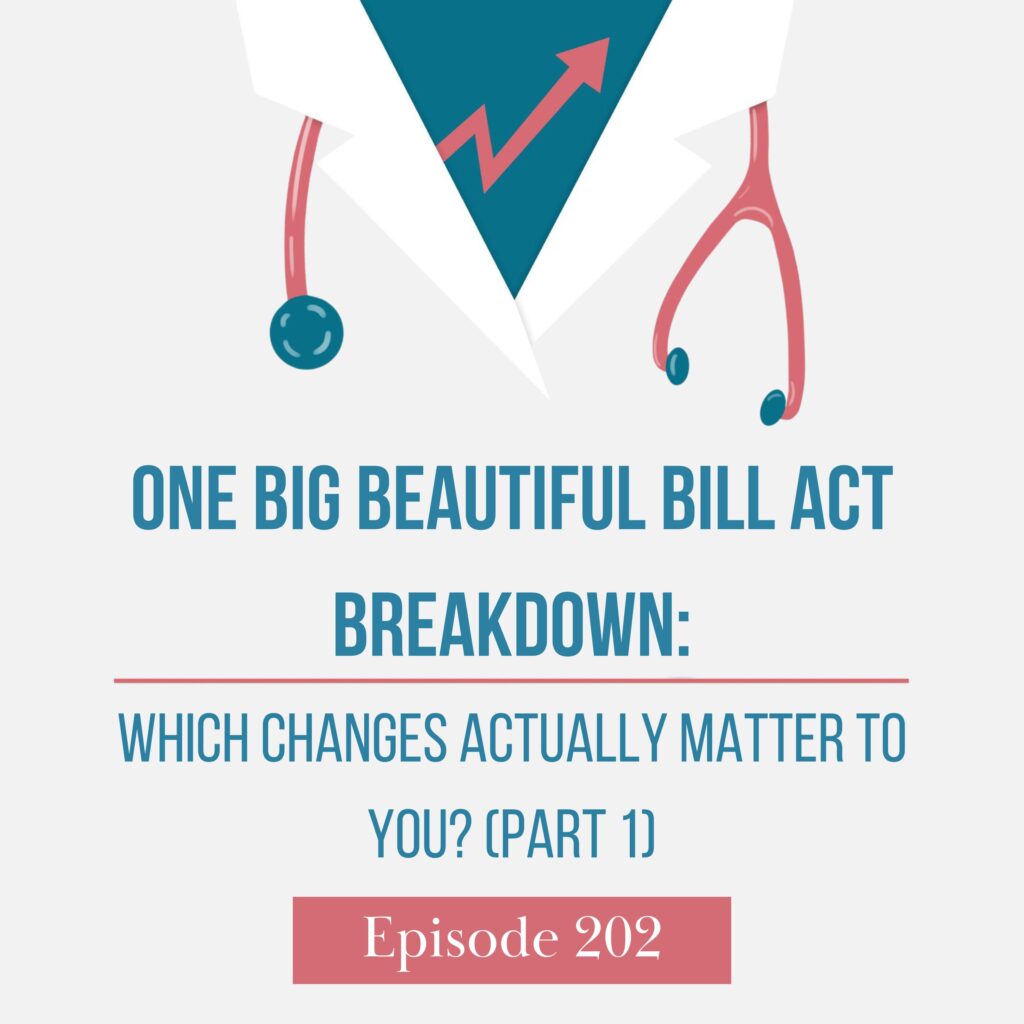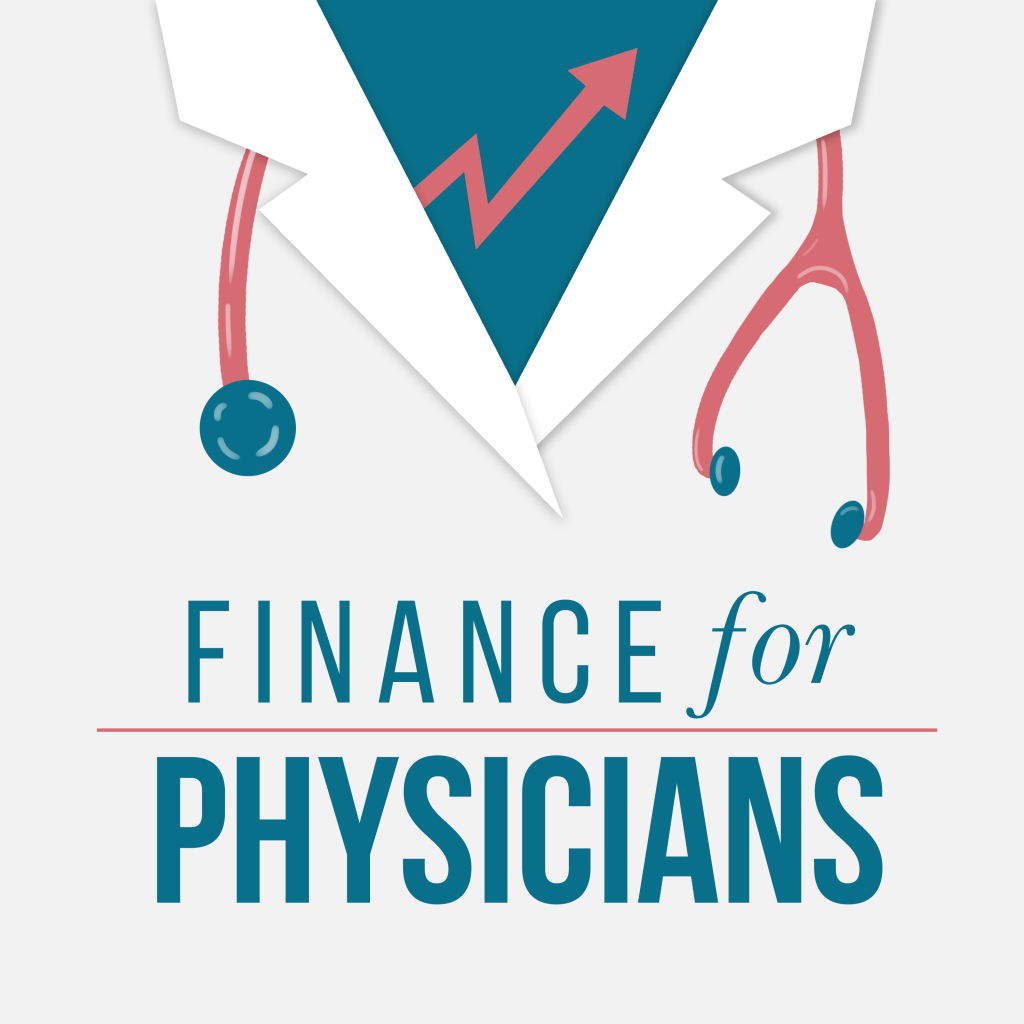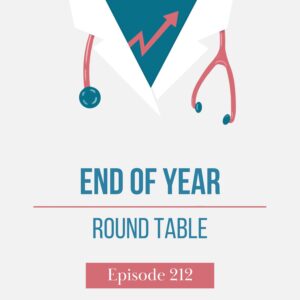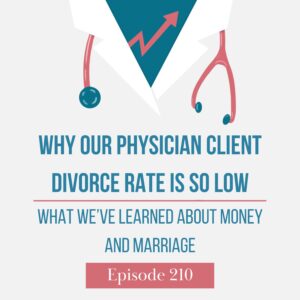Big tax law changes are here, and they could have a major impact on your finances.
In this episode, we’re breaking down the One Big Beautiful Bill Act (OBBBA) and what it means for physicians, starting with the non-student loan changes. We’re joined by Jeff Wenger and Heather Lovallo to explain the updates and what you should pay attention to this tax season.
You’ll learn how the new rules affect your tax brackets, standard vs. itemized deductions, child tax credit, estate planning, and even whether buying a new car might make a little more sense now (spoiler: not really).
This is Part 1 of our two-part series on the new bill. Don’t miss what’s coming next!
—————————————————————————————————————————
Transform your financial outlook today! Access our exclusive free resources for physicians and conquer financial stress. Access here. P.S. We value your opinion! Share your thoughts and insights with us. Your feedback helps us improve and tailor our content to your needs. Click here to give us a piece of your mind.
Links
- Vitals Check: Your Money Game Plan for Post-Residency Life course link: https://courses.financeforphysicians.co/pages/vitalscheck
- Use code PODCAST for 50% off (valid through August 31st)
- Connect with Heather Lovallo
- Connect with Jeff Wenger
- Connect with me on my LinkedIn
- Contact Finance for Physicians
- Finance for Physicians
- To schedule a call with one of our awesome planners, book HERE.
Full Episode Transcript:
Jeff Wenger: The good news is $40,000 of taxes can be deducted by itemizing, which for some of you out there, just those taxes already puts you past that $31,000 standard deduction we were just mentioning. So very possible that’s a big win for someone listening here. Now, the caveat to that, the small print you might wanna focus on this, is that applies to families with an income, basically think $500,000 or less. Once you get over $500,000, it starts to phase out to the point where if you hit $600,000 of income, you’re all the way back down from $40,000 of the state and local tax deduction to $10,000 again.
Welcome to Finance for Physicians, the show where we help physicians like you use money as a tool to live a great life. I’m your host, Daniel Wrenne, and I’ve spent the last decade advising physicians on their personal finances with the mission to help them understand that taking control of their finances now means creating a future where they can practice medicine where, when, and how long they want to.
Daniel Wrenne: Hello, everybody. We have two special guests today. So I’m doubly excited to talk today and we get to talk about the One Big Beautiful Bill Act, right? O-B-B-B-A.
Heather Lovallo: Say that five times fast.
Daniel Wrenne: Did I get that correct?
Jeff Wenger: It’s ABBA, but without the ‘Dancing Queen.’
Daniel Wrenne: Jeff’s been playing in that one.
Heather Lovallo: He was ready.
Daniel Wrenne: I was practicing saying that, and I think I nailed it, but I did not have high confidence on being able to nail the One Big Beautiful Bill Act, but it is now a law. So we felt like it was important to give a breakdown of what’s changed, how it affects you guys listening, and there are a lot of changes.
Some of ’em good, some of ’em not so good. So we’re gonna focus in on the non-student loan aspects because I think the student loan aspect in particular had a lot of big changes that will affect a lot of you guys listening. So qe felt like it’d be better to cover that in a separate conversation and just zero in on that.
So today we’ll be focused in on the non-student loan aspects of the O-B-B-B-A Act, whatever you wanna call it—Bill. So we’re gonna try to cover those most relevant points that we’ve identified. There’s a bunch of changes. There’s like if I was making an attempt to read through the bill, kind of in tangent with ChatGPT.
I don’t know if either of you guys have tried this yet, but it’s a monster. Now with ChatGPT, it is a little bit more manageable, but it’s a monster of a bill. It’s hundreds and hundreds of pages.
Jeff Wenger: So that’s where the “Big” comes from.
Heather Lovallo: Yes. And it’s beautiful.
Daniel Wrenne: It is definitely big. I would say it’s not beautiful from a textual standpoint. It’s very poorly worded, but it’s in legalese language. So anyway, we’re gonna go through the changes. Some of the things have been solidified. And so I think to start, we will talk about the stuff that has been this is really not a change, the stuff that’s been solidified.
So Jeff, I’ll kick it over to you first to talk about what’s happened with tax brackets and then the deductions—standard deduction stuff.
Jeff Wenger: Oh yeah. So with the tax brackets, so the talking point we’ve had along the way for the last several years is the tax cut in Jobs Act that tax brackets are gonna revert back. They’re gonna expire to the old higher ones.
The news from the One Big Beautiful Bill Act, OBBBA, is that those tax brackets have been made permanent. Which means that they don’t have an expiration date. So in other words, the tax rates that we’ve been used to for the last 10 years roughly will stay in place until positive action and intentional action is taken to change them.
So permanent doesn’t mean you can count on them for the next a hundred years, but it would actually take action to change them at this point. So they have been changed a bit. Some of the lower tax rates were expanded, just a hair. I think it’ll amount to a hundred dollars in difference in taxes.
Don’t quote me on that. It’s not a major change there overall, but basically they’ve been made permanent and they’ll keep indexing with inflation. So that gives us those tax brackets that you might have heard of are at the 10% rate, 12% rate, 22%, 24%, 32%, 35% and the top tax bracket being 37%.
Daniel Wrenne: Basically the same as it was last—well, this would be effective in 2026, but basically it’s a continuation of what we’ve all gotten used to the past few years, and I think the big takeaway. Because Jeff was saying, it was set to expire at the end of this year. And so for most of you guys listening, that would’ve been a negative impact on your taxes.
Like your tax bill would’ve been—for most people listening—higher had those expired. That part I would say is a positive change for the most part. Jeff, anything else to add on the tax bracket changes?
Jeff Wenger: Oh, yeah, a few other things that have to do with just the regular old, the way you file taxes.
The standard deduction has been increased a little bit, and it’s been made permanent as well. So the standard deduction is the amount that you get to take off of your income no matter if you’re counting your expenses and your taxes and everything else or not. And for a single person, it’s just under $16,000. And then that’ll be indexed with inflation.
It was $15,000 for a single person, so a little bit of an increase there in how much income is basically tax free to you. For the head of household, it’s $23,625 now, and for married filing joint, it’ll be $31,500. Again, so the reason that’s important is you can always take that off of your income tax after, it reduces your income and you don’t pay tax on that amount of income.
But the other reason to keep that in mind is that is a threshold where itemizing, you have to have more itemized expenses to actually itemize or also it just doesn’t make sense to you in most cases. In that $30,000 range is where a lot of our married families are gonna be looking or are $25,000 or so for a head of household, or that $15,000-$16,000 range for a single filer.
Daniel Wrenne: And so that was a continuation as well as what it was in the past, but also an improvement for what it was back. What it would’ve reverted to would’ve been a lower number for standard deductions. I guess you could say generally is a good thing. I think we’ll circle back to some of the components of the standard deduction or I guess itemized deductions.
‘Cause that that’s changed also is like how you calculate the potential itemized deductions because that’s an important thing. Because the question is do you take the standard deduction, which everybody gets, or do you take this itemized deduction because you’ve done the calculation and it’s higher than the standard deduction.
The way that all works has changed some. Which we’ll circle back to in a minute. But other things, Jeff, in regards to tax brackets?
Jeff Wenger: Oh, the only other kind of change that was there, this would be for, if we have some senior listeners here, would be that there is an additional standard deduction or credit exemption that’s available.
And it has an income phase out of that’s about $150,000. So it’s not for everyone. But you could actually have a little bit more tax-free income if you’re 65 plus.
Daniel Wrenne: Yeah. That’s the part that was intended to be like the social security tax free kind of.
Jeff Wenger: Oh, yeah. Good point. Yeah. That’s being touted as social security is tax free.
It’s the tax status of social security is still the same. It’s just effectively, you will not pay tax on more income with that credit, with that exemption. You may not pay tax on social security where you once were, but it doesn’t make it tax-free just as a blanket statement.
Daniel Wrenne: Right. Yeah. I think they ran into some roadblocks with that when they were actually in the creation of it, where they were gonna have to get more votes and complicated. And so they’re like, “Here’s a workaround.” That’s the messy part of politics, I think. But this is the unofficial or indirect version of their way of doing that, I guess.
Jeff Wenger: For many people, it means less tax, but it doesn’t mean tax-free.
Daniel Wrenne: No. Yeah. I mean that will definitely be good for people retired or 65 or older that’s income’s below the threshold. And from a strategic standpoint, there’ll be a little bit of extra efficiency with trying to keep your income below that threshold.
‘Cause when you’re retired, unless you’re just purely relying on like pension income, you typically have lots of control over how you take out of accounts and it affects your income tax bracket. I haven’t looked at the exact effective rates, the numbers of all of it, but that’ll add some incentive to keep your income below that threshold to allow you to get that.
Jeff Wenger: Right. Yeah. You’re talking about the tax brackets being permanently extended. There was a push to convert a lot of things to Roth. Now, while the tax rates are low, ’cause they’re gonna expire. Now there’s still an incentive to convert to Roth ’cause if you can control your income at an older age and continue to get this, it’s a $12,000 credit or a deduction. That’s a pretty decent credit in that, or a deduction in that range.
Yeah, definitely some income planning is worthwhile there.
Daniel Wrenne: Yep. Consult your financial planners.
Heather Lovallo: Yes.
Daniel Wrenne: Or Jeff or Heather. Cool. Does that cover it, Jeff, on the…?
Jeff Wenger: I think that gets us through those basics of the tax rates.
Daniel Wrenne: Every detail you need. Just kidding. No, that is not every detail. Consult your accountants and read the bill yourself for every detail.
Heather Lovallo: Yes, absolutely.
Daniel Wrenne: That would be painful. Okay, so couple other big changes. Child tax credit… Estate tax exemption and child tax credit. Those were pretty big, not necessarily changes, but little changes. Heather, you wanna break it down for us?
Heather Lovallo: Sure. Let’s start with the child tax credit. That’s probably the one that will affect more of our listeners, at least at this point in time. So this was another one of those permanent changes, until and unless new legislation is introduced to change things again, but a permanent increase to the child tax credit.
So starting this year, 2025, it has gone up slightly to 2200. Now starting next year in 2026, it’s gonna be index to inflation. So that’s a new thing. That will be nice to see that going up year over year. One thing to note, of course, this is still an income-based phase-out on that child tax credit.
So in case you were wondering, for those of you that are single filing or have household, it’s $200,000 is where that income-based phase-out starts. And then for those of you that are joint filers, it starts at $400,000. And then with the estate tax exemption, this was a pretty big deal for those who might be anticipating a significant inheritance or planning Tto leave quite a legacy to future family in the future.
This was actually set to expire at the end of this year. So there was a lot of estate planning going on. A flurry of activity to try and avoid what was going to be a very large decrease, 50% decrease, in the amount that could be exempted as of the end of this year.
But instead there’s actually going to be an increase from where it’s at right now, 13.99 million. It’s increasing to 15 million per person for that exemption, and that will be starting next year in 2026. So again, instead of that decrease by 50% at the end of the year, instead, it’s actually gonna be going up from what it is right now.
So a pretty big deal there.
Daniel Wrenne: Some people were concerned about that, especially if your net worth is/or would be expected to exceed the number, double the number is now—30 million versus 15 million. Huge difference. And when you’re thinking about that number, like if you’re thinking about was that, is that me or not?
The way really should look at it is it’s your net worth. So all your assets minus all your liabilities, plus your life insurance, total death benefit. ‘Cause if something were to happen, that’s what your estate is. It’s all your assets at death. And then even you might throw in inheritances potentially expected over the short term or foreseeable future.
So that kind of. Pulled together is like potential estate. And 15 versus 30 million. This is for couples. I’m just throwing out.
Heather Lovallo: Right, right. 15 per person. 30 if you’re doubling that for including the spouses for the married couples. And I’m sure a lot of our listeners are like, “I don’t have that right now.” But we are all trying to accrue those assets over time. And so this is something that hopefully will be relevant to our listeners as they are increasing their assets and looking ahead to their future estate planning.
Daniel Wrenne: Or your parents or grandparents, that might’ve helped them. They’re probably more likely if you’re younger and you’re listening, your parents or grandparents, if they have sizable estates. They’re gonna be benefiting even more but which also potentially would be benefit you.
Heather Lovallo: Correct.
Daniel Wrenne: So it’s all good. The child tax credit thing, it’s a little change. Little improvement. So that’s good. I wouldn’t say it’s a game changer, but.
Heather Lovallo: No. But always nice to have something indexed to inflation.
Daniel Wrenne: Yes.
Jeff Wenger: I don’t know. I have four kids now, maybe five.
Heather Lovallo: Probably need to talk with Mindy first.
Jeff Wenger: Consult your partner if you want to increase your family size. Got it.
Daniel Wrenne: Last I checked, not great to have children purely for financial reasons, so.
Jeff Wenger: The credit doesn’t cover it all.
Daniel Wrenne: Last I checked, no, I guess in some cases people are in a tough position to wear. They’re restricted from being able to have children. That’s a different story. And so this can help them, but I don’t know that, I wish there was a little bit more emphasis in that category. I’m starting to get into opinions, so I’ll keep it short, but I think there was a lot of talk about incentivizing families per child, children, producing children, increasing the number of children, and this doesn’t change that much in my opinion.
AD BREAK
Daniel Wrenne: I wanted to take a quick break to share some exciting news. Our new course, Vitals Check: Your Money Game Plan for Post-Residency Life, is now live. If you’re finishing training or just getting started as an attending, this course is for you.
It’s taught by me and my team, the same financial planners you’ve been hearing from on the podcast. We’ll be walking through big money decisions you’re facing right now. Things like what to do with your student loans or how to make smart housing decisions, and where to start investing.
You’ll also gain access to proven tools and templates that will help you set goals, track your money, and build a plan that fits your life. And just for listening to this podcast, you can get 50% off if you sign up by August 31st. Just make sure to use the code PODCAST at checkout. You can register now at financeforphysicians.co, and we’ll make sure to include the course link in the show notes.
AD BREAK END
Daniel Wrenne: So this gets into the itemized deduction thing versus standard deduction I was implying a little bit earlier. There’s been a few changes to the way that you do your tax return and calculate what you actually get taxed on. So we were talking about deductions a minute ago, so Jeff’s gonna get into what some of those look like in terms of actually applying deductions.
Jeff Wenger: Oh yeah. See, this is where taxes get exciting and confusing. Yeah, this is overall very interesting, the itemized deduction changes, and possibly very helpful for some of our listeners, and possibly very disappointing for others. So let me get into it. Just to summarize, prior to the One Big Beautiful Bill Act, OBBBA passing, anyone that’s filing taxes would be limited to $10,000 of itemized—of state and local taxes. That’s where SALT (State and Local Taxes) only $10,000—
Daniel Wrenne: Which would be composed of?
Jeff Wenger: Only 10,000 could be deducted. That would be made up of, yeah. Daniel, what do you think goes into that?
Daniel Wrenne: You tell me.
Jeff Wenger: Oh!
Daniel Wrenne: State and Local Income Tax. There’s one more.
Jeff Wenger: Alright. Pop quiz, State and Local Income Tax, or you could do sales tax if sales tax was more of a benefit for you. And in some states, it has no income tax. That might make sense now to track a little bit more of that. And also real estate taxes, property taxes.
Daniel Wrenne: Property taxes. That’s the big one. In most physicians, what do we see? Most physicians when you add those all together?
Jeff Wenger: Oh yeah. For most of the physician families we work with, that far exceeds $10,000 a year.
Daniel Wrenne: Especially—
Jeff Wenger: With just the real estate sometimes. Yeah. Yeah. Many times. Yeah.
Daniel Wrenne: But especially depending on your location, right?
Jeff Wenger: Certainly depending on your location. Yeah, if you’re in a highly populated area with really pricey homes. I wouldn’t know. I’m in Ohio, so that’s exciting for me. But some areas of Ohio have some pricey homes, but yeah, some of those really high cost of living areas that also tend to have high income tax rates on at the state level in particular.
So I’m thinking, New York, California are big ones, right? But there’s plenty of states with an income tax where this would matter. And so the news there, so I didn’t get to the good part. So historically, that’s limited to $10,000 of deductions for those taxes. That is temporarily being increased to $40,000, with an asterisk, with a caveat.
But the good news is $40,000 of taxes can be deducted by itemizing, which for some of you out there, just those taxes already puts you past that $31,000 standard deduction we were just mentioning. So very possible that’s a big win for someone listening here.
Now, the caveat to that, the small print you might wanna focus on this, is that applies to families with an income, basically think $500,000 or less. Once you get over 500,000, it starts to phase out to the point where if you hit $600,000 of income, you’re all the way back down from $40,000 of the State and Local Tax deduction to $10,000 again.
So if you’re on the very high end of earning, this makes no difference to you. Because you’re gonna get capped out, only $10,000 of taxes are deductible again. But in that range, a lot of families might be in that range of right around that $500,000 range for income.
It’s gonna make a lot of things more important for planning income, like your pre-tax deductions and trying to stay in that phase-out range if you have those taxes to itemize. Daniel, you look like you’ve got a lot of questions, a lot of things. What do you have?
Daniel Wrenne: No, I just, point of clarification, maybe what do they define as income in that particular phase out?
Jeff Wenger: It’s the MAGI (modified adjusted gross income). And I cannot remember what goes into that modification off the top of my head.
Daniel Wrenne: That’s like top of the line deductions, like charitable contributions and there’s different types of income.
That’s what I’m asking about, like when you do your tax return, it starts with what you make. It starts with the total wages and then you deduct things and you get to lower numbers. Ultimately, you end up with your taxable income. That’s the bottom lowest number typically. This sounds like based on the modified adjusted gross income, which is higher up on the tax return with a slight small print. There’s all this small print when we start talking about taxes, like variations and whatnot. But the gist is, it sounds like high, high income, higher than average physician income, is gonna get phased out of this and end up in the same position we were before with the $10,000 limit.
Jeff Wenger: Right, right. But I think if you have particularly a lot of single physician households or even some dual physician households that range, that $500,000 is a phase out to watch. And if you can get some extra bang for your buck by doing things that reduce the income at the top, don’t just earn less income to earn less income.
So you’re not being taxed more than a dollar for a dollar of income that you make. But. If you have some room to fund your 401(k) or 403(b), or your health savings account, things like that, those are the choices you can make. That’ll help out with man. You can now also get a better deduction for the taxes you’re paying other places.
Daniel Wrenne: Yeah, and that’ll make a ton more, I would say the average physician family we work with is probably going to see benefit from this to some extent. ‘Cause the average, I would say the average income is maybe you were a little below that or around that. And so it’s a pretty substantial benefit. Say your SALT taxes you were paying was like, say you have a million-dollar house and you got pretty good income, it’s definitely way above $10,000 that you were not able to deduct.
So every dollar above that now is deductible, which increases the chances you’re, and it gets a little confusing ‘cause you gotta decide how much it actually increases your number compared to the standard deduction. ‘Cause that was the prior number. But there’s gonna be a fair amount of people that have— especially if you have mortgage interest.
‘Cause that’s the other component in the standard deduction and charitable contributions. If you had modest charitable contributions, a decent amount of mortgage interest and your incomes in that $500 or less range. You probably are gonna see some pretty good, especially if you’re in a high tax state, high income tax state, you’re probably gonna see some pretty good improvement or benefits from this particular change, but it’s temporary.
Jeff Wenger: It’s temporary. Expires in 2029. Pay all your taxes now, I suppose, and make sure you’re under $500,000 of income. So really pay your taxes now. But wait, there’s more, Daniel.
Daniel Wrenne: Oh.
Jeff Wenger: With itemized deductions. So this is where, like I said, I don’t know if there’s anything more exciting in taxes than really thinking about your itemized deductions.
Daniel Wrenne: So exciting.
Jeff Wenger: Maybe actually, probably there’s more exciting stuff like the QBI, the qualified business income. Oh goodness. Now that really gets me going. But so there’s also now a limit. So we talked about a limitation on how much, like the benefit of itemizing deductions for higher income earners.
So we mentioned the SALT deduction, that State and Local tax. That $500,000 is a magic number to be looking at. Now for our listeners or anyone that’s in the third, the top tax bracket, the 37% tax bracket. And that one, so that starts at about $760,000 for a married couple. $635,000 for a head of household that has dependents or the same for a single filer.
So certainly higher income overall. But normally when you itemize or when you get that deductions, so if you are in, let’s say we’re in the 35% tax bracket, if I itemize a dollar. So if I gave $1 to charity and was deducting that, I get $0.35 back on my taxes because I’m in the 35% tax rate.
For the higher income, so in the 37% bracket, that is now slightly different, where there’s a fraction attributed to it, basically you pay taxes at 37%, but you can only deduct them at 35%. So you don’t get quite as much benefit as a normal other tax brackets as far as the marginal rate, you don’t get the same going in as coming out.
So overall probably doesn’t make a major difference to your decision on whether to itemize or not. You still get your tax. You still wanna save on taxes if you’re giving, if you’re paying those state and local taxes, things like that. But it’s a little downer. Most of this news has been like how you can save more money.
This is like, eh, you’ll probably have to pay a little more.
Daniel Wrenne: Yeah. Now on the flip side of that one though, that would increase the marginal impact of being able to do things like pre-tax 401(k) or whatever, because if you can pull that income down below that threshold and avoid. So there’s a reverse effect of being able to pull the income down below the threshold and gain those back that effectively has.
It’s just more incentive. A lot of the things that happen have two sides of the coin. So there’s a fair amount of incentive in that just as the incentive to try to get work to get your income after your federal wages lower, which we’ve already hit on this a couple times.
The easiest or most obvious way to do that is maximizing retirement plans, 403(b) 457, that kind of thing. HSAs on a pre-tax basis. It’s just amplifying the impact of that. So there’s always strategies that’ll come out, and we’re only starting to extract all the strategies that are possible out of this.
Jeff Wenger: Yeah. Oh, I got one more, Daniel. It’s kind of itemizing, but it’s like below, below the line so you don’t even have to itemize for this one. But it also is not above the line, so it doesn’t change your AGI. And if we’re speaking IRA-sis, just know that you can still get this deduction even if you don’t itemize is the idea.
Daniel Wrenne: I think I know what’s coming.
Jeff Wenger: But this is so cool. Or maybe it’s not, but you can now deduct up to $10,000 of interest on an auto loan on a vehicle loan.
Daniel Wrenne: Amazing.
Jeff Wenger: Amazing, right?
Daniel Wrenne: Okay. Do the math. This, I said let’s not get too far into the numbers before we start recording, but we gotta get into the numbers for this one.
‘Cause I just am curious what would you have to do to maximize that?
Jeff Wenger: Well, certainly if there’s a deduction, we wanna maximize it, so.
Daniel Wrenne: This is Jeff being sarcastic, by the way.
Heather Lovallo: Yes.
Daniel Wrenne: If you’re not picking up on it.
Heather Lovallo: Yes.
Jeff Wenger: Yeah. We need some sort of audible cue that I’m being sarcastic there.
So it is funny. So today’s interest rates, let’s say about 5% for an auto loan right now. So if we have an auto loan at 5%, you would need $200,000 of auto loan to maximize that deduction.
Daniel Wrenne: What’s the big deal with that?
Jeff Wenger: Daniel, you need a new car, I think. So you can go big.
Daniel Wrenne: New car. Oh, not a new car, maybe next time. Not a new car. I got a used car. So used cars don’t count for this, right? I think it has to be a new car. That’s another caveat. So we’re not endorsing going out and buying a $200,000 car.
Heather Lovallo: No, we are not.
Daniel Wrenne: However, the tax code is—not endorsing. They’re incentivizing slightly
Heather Lovallo: Incentivizing, yes.
Daniel Wrenne: So I think I was referring to the—I was reading a White Coat investor article on this break breakdown of this bill, and he said it pretty well. He said this makes buying brand new cars on credit slightly less stupid. So I would say I mostly agree with that. I don’t know if I’d go that far.
Heather Lovallo: Looking at this. It appears that this does apply specifically for new vehicles. I think it was proposed to include pre-owned vehicles, but I think the final version of the bill excluded pre-owned vehicles. So just throwing that out there.
Jeff Wenger: Yes, practically speaking, plenty of people do have loans on their vehicles. And so if you happen to have one on a new vehicle that was assembled in the United States and the loan was taken out or refinanced after December 31st, 2024. So that’s after last year.
Daniel Wrenne: Yeah.
Jeff Wenger: You may as well get the deduction if you have the interest, but that doesn’t make it necessarily the right decision to have the loan.
Heather Lovallo: Sure. Sure. Buyer beware. I do feel like a lot of car salesmen are gonna be capitalizing on this, but to be clear, this is not us advocating to maximize this deduction.
Daniel Wrenne: Even with this change, cars will still continue to depreciate and debt will still net of all this cost you money. So none of that’s changed.
Jeff Wenger: Oh, I was skipping over this one, but we’ll just pair it up with one other expiring tax credit now.
So if you really wanna maximize this, there’s the clean energy and clean auto type credits things like of that nature. So make sure you get your $200,000 vehicle by September 30th. So that you can both get the $7,500 credit for buying an EV vehicle. But again, and you get your new loan on a new vehicle that was assembled in the United States so that you can maximize your interest deduction.
Daniel Wrenne: Practically free.
Jeff Wenger: Yes. But for those that were thinking about getting it and qualified for that credit, do know the expiration has been moved up September 30th. You gotta have that vehicle if you’re getting it. Otherwise you get no credit for it on your taxes. Similar vein, solar credits, clean energy, so solar panels, things like that.
Originally, that was scheduled to go on into the next decade here, where you could get about 30% back as a tax credit on those clean energy type upgrades to the home. That has been cut short where you would have to have that done by the end of this year if you wanna get that tax credit.
Daniel Wrenne: The rush is on.
Jeff Wenger: And at the time we’re recording this, it’s the end of July. If that was something you were thinking about, maybe it’s worth thinking about a little harder already, but you probably gotta get on that to make it happen by the end of the year.
But just know those are things that are going away that were credits.
Daniel Wrenne: So charitable contributions, the rules on that changed a little bit as well. You’re already able to deduct charitable contributions as part of the whole itemized deduction component of your taxes. So that’s one way to look at charitable contributions, is their collectively a part of the number we were referring to with itemized deductions, but now there’s another way to do it.
Heather, you want to go through what that looks like?
Heather Lovallo: Sure. So just to clarify, for those of you who itemize your deductions and you also give charitably, just some new thing to note is that there has now been a new 0.5% of adjusted gross income floor that’s been added to calculate how much you can actually deduct as part of that below-the-line itemized deduction.
So what that means is your charitable contribution deduction amount is actually reduced by a number that’s equal to 0.5% of your adjusted gross income. So round math. A $100,000 adjusted gross income, there’s gonna be $500. The first $500 of your charitable contribution can’t be deducted.
But beyond that, the number can be deducted up to the maximum amount and carried over potentially to the next year if you can’t take the whole amount. That being said, a very interesting back to what I think has been in place before in the past, but hasn’t been on the books for a while, is for those of you who just take the standard deduction because you don’t meet the threshold for being able to itemize over what you’d be able to take for the standard deduction.
Starting in 2026, so starting next year, you can deduct anyway, even if you are not itemizing, a certain amount of your charitable contributions. So for those of you who are single head of household it’s gonna be a maximum of $1,000 in charitable deductions. For those of you that are joint filers, it’s up to $2,000.
And again, that’s for those of you who take the standard deduction, don’t have enough to itemize, there is still a possibility for you to be able to deduct your charitable contributions up to a certain amount, so.
Daniel Wrenne: Those kind of are intangible with each other, right? So the first point you’re bringing up, essentially if you deduct below that floor, you just can’t deduct it.
Is that correct?
Heather Lovallo: So for those who itemize. There’s that. Correct. There’s that 0.5%. In other words, if you make $100,000 and your floor is $500, which is 0.5% of your AGI, that means if you only were to contribute $500 in a year, you wouldn’t be able to deduct anything.
But if you contributed $1000, you would be able to deduct $500. Does that make sense?
Daniel Wrenne: Yeah.
Heather Lovallo: This one is a little bit confusing but really what it means is there’s just an extra calculation, extra number to factor in.
Daniel Wrenne: Is that like a cliff? Is it like when you exceed the 0.5% you can deduct it, and if you’re below it, you can’t?
Heather Lovallo: Yes. Essentially, if you’re below that amount, you just can’t deduct it. If you are over that, then you can, and of course, that’s subject to the limits of how much you can deduct in a year. And even if you’re itemizing.
Daniel Wrenne: But that one’s interesting because it is something to watch out for too, is at least, I think how I’m understanding it is if you say you make—$100,000 is a good number. So it’s $500 for every $100,000 of income. So let’s say you’re making $500,000 that’s $2,500, so if you’re itemizing because of all this SALT tax stuff we’ve already gone through and you give charitably $2,500, maybe you should give 2,501.
Is that correct? Am I understanding that correctly? Or am I misunderstanding that?
Heather Lovallo: No, my understanding is that you’d be able to deduct a dollar out of that amount.
Daniel Wrenne: So it’s just anything below that number you cannot deduct no matter what happens?
Heather Lovallo: That is my understanding.
Daniel Wrenne: Yeah. So that’s a little bit, that makes a little bit more sense. It doesn’t—I wouldn’t be surprised only way or the other, based on how they structure these things, but. So anything below that floor, no matter what your situation is, if you’re itemizing, you cannot deduct it below that level?
Heather Lovallo: That’s my understanding. Yes.
Daniel Wrenne: Okay. That’s a bummer. But on the flip side—
Heather Lovallo: For those of you that are trying to be strategic with your charitable giving and you are giving in order to reach a certain level, it’s just another calculation to factor in. Of course, those of you that are going to give to charity regardless, please don’t let this deter you from doing what you’re going to do anyway.
But again, just another calculation to factor in.
Daniel Wrenne: Yeah. It might increase the appeal of batched giving, which we’ve talked about in the past a little bit. But that would be where you bulk all your gifts for a longer period of time, say five years or something. You bulk all of them in one year, potentially.
Could change the strategy on that, but we’ll circle back to that in the future. ’cause a lot of these things are new and big changes. So on the other hand, the second thing you were bringing up, that’s a positive. So this is a negative on the top end, positive on the bottom end.
Heather Lovallo: Definitely. Definitely. It’s giving credit to those that are giving charitably anyway.
And even though they’re not able to itemize, maybe they don’t own property yet. Their income just isn’t high enough yet to have all of the different things purchased that might qualify for itemizing their deductions. It is still nice to be able to get some credit for the charitable contributions regardless.
Daniel Wrenne: Yep. That’s always good.
Alright, guys. We’ve covered quite a bit today and it’s definitely a dense topic and so I thought it’d be best to take a pause here and give you some time to digest everything we’ve talked through, and in the next episode we will pick up where we left off and continue to go through the other key components of the new tax bill.
So make sure to check in for part two. We’re gonna get into a couple things. Things like the way the new tax bill changes tip income and overtime income. Also, we’re gonna talk about Trump accounts and some big changes to the 529 plans. Also, some HSA changes, so make sure to check back in, and we’ll look forward to catching back up then.
No guests or clients appearing on the podcast received any form of compensation for their appearance and obtained no other benefit from us. It should not be assumed that every client has had the same experience.









